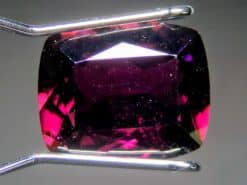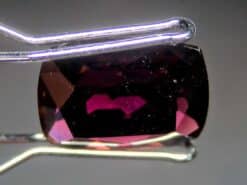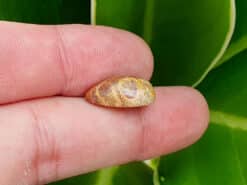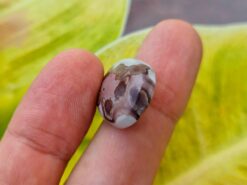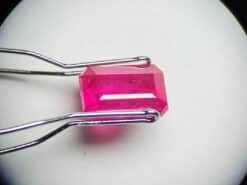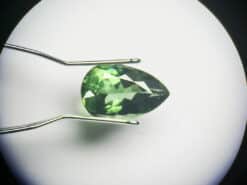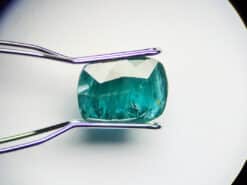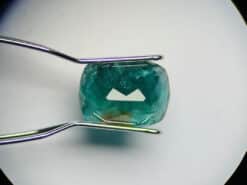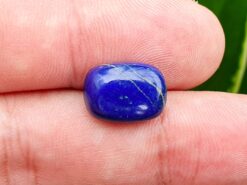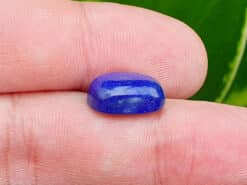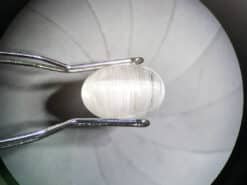Phenakite
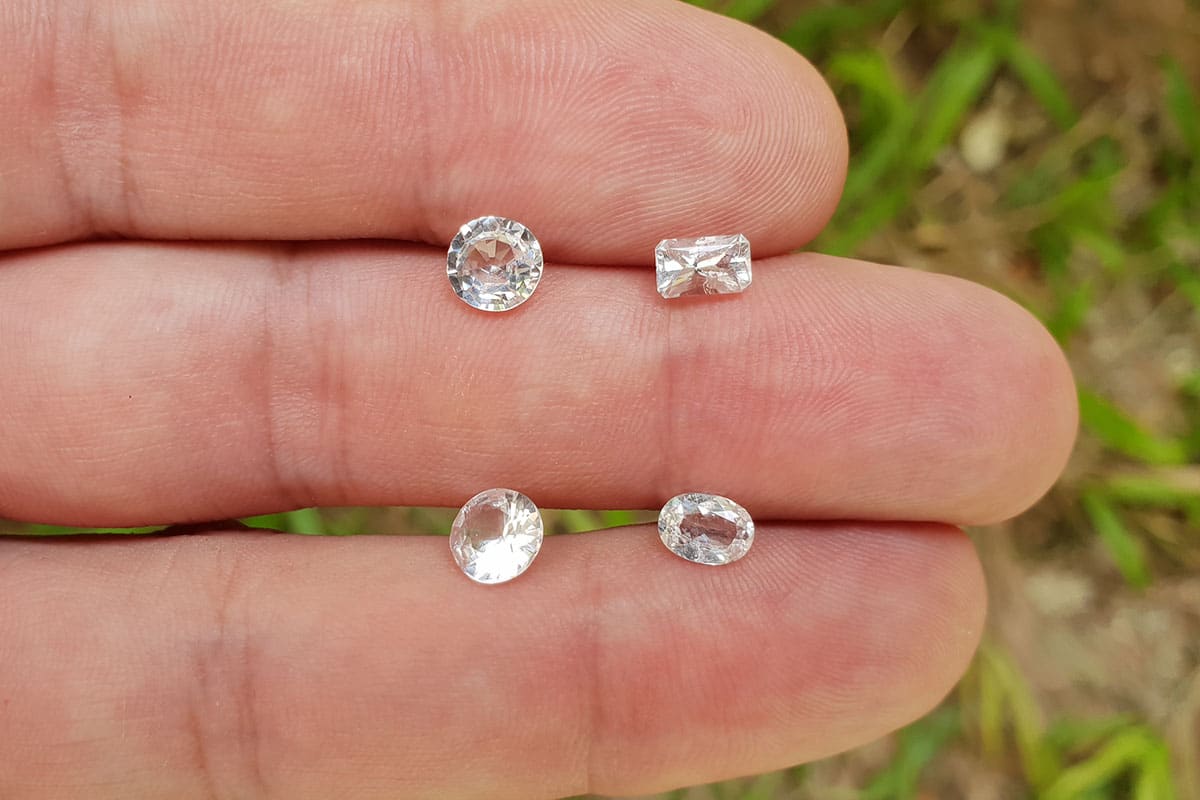
A fairly rare nesosilicate mineral consisting of beryllium orthosilicate.
Buy natural gemstones in our shop
Phenakite or phenacite
Occasionally used as a gemstone, phenakite occurs as isolated crystals that can form in distinct habits. These crystals are typically rhombohedral and may show parallel-faced hemihedrism, lending them a unique geometric complexity. While some crystals appear lenticular due to a predominance of obtuse rhombohedral faces and a lack of prism faces, others present a more prismatic habit. This remarkable crystal diversity reflects subtle variations in the mineral’s growth conditions deep within the Earth’s crust.
The stone lacks true cleavage, and its fracture is conchoidal, producing smooth, curved surfaces when it breaks. With a Mohs hardness ranging from 7.5 to 8, it is notably durable—harder than many well-known gems. Its specific gravity is about 2.96, placing it in an intermediate range compared to other beryllium-bearing minerals. Although perfectly colorless, transparent phenakite crystals are known, many specimens lean towards a delicate grayish or yellowish tint and are sometimes only translucent. Certain rare examples can display a pale rose-red hue. This subtle coloration, combined with its high brilliance and notable hardness, makes it intriguing to collectors.
In general appearance, this mineral can resemble quartz, which led to its discovery being met with some confusion. Historically, phenakite lived up to its Greek name phenakos, meaning “deceiver,” as it often fooled early mineralogists and gem hunters who mistook it for quartz. Despite this similarity, phenakite’s greater refractive indices and distinctive crystal forms set it apart from more common minerals. While it is not frequently used in mainstream jewelry, transparent crystal may be faceted for the delight of dedicated collectors who appreciate its subtle charm and exceptional brilliance.
Over time, it has earned recognition in specialized gemological circles. Its rarity and distinct optical properties mean that faceted stones, though uncommon, can exhibit a brightness that rivals well-known gemstones. This elevated luster arises from its relatively high refractive index, placing it in a distinguished class of lesser-known, yet highly intriguing, mineral treasures.
Phenakite gemstone sources
Its formation is typically associated with high-temperature pegmatite veins and, on occasion, mica schists enriched in beryllium. Within these geological settings, it commonly occurs alongside quartz, chrysoberyl, apatite, and topaz. One of the most celebrated historic localities is the Takovaya stream near Yekaterinburg in the Urals of Russia, where large phenakite crystals were discovered within mica schist environments. These Russian finds, renowned for their quality and size, provided early mineralogists and collectors with some of the finest examples known.
Other notable occurrences include the granite regions of the southern Urals and Colorado, USA, where phenakite can be found with topaz and amazon stone. In South Africa, prismatic crystals have been identified in beryl dissolution cavities, offering a glimpse into the mineral’s complex formation history and the interplay of geological processes over millions of years. Large prismatic phenakite crystals have also emerged from feldspar quarries in Norway and other localities like Alsace, France. Some of these exceptional specimens measure up to 12 inches (300 mm) in diameter and weigh as much as 28 lb (13 kg), underscoring the mineral’s capacity to form impressively substantial crystals.
For gem purposes, The stone is often cut into a brilliant style to highlight its natural fire and luster. Among the most notable faceted examples are two stones weighing 34 and 43 carats housed in the British Museum. Their refractive indices exceed those of quartz, beryl, or topaz, granting these cut phenakite gems a scintillating sparkle. It is this exceptional brilliance, combined with its rarity, that sometimes leads phenakite to be mistaken for diamond by the untrained eye.
Phenacite crystal meaning and healing metaphysical properties benefits
The following section is pseudo scientific and based on cultural beliefs.
In certain traditions, the stone is revered for its alleged metaphysical attributes. It is sometimes said to benefit the nervous system, potentially supporting those with nerve damage or certain imbalances in brain function. Believers hold that phenakite may help stimulate and enhance various aspects of cognitive activity, though such claims have not been scientifically validated. Some also associate phenakite with easing discomfort linked to migraines and headaches, suggesting it may alleviate pain and nausea when used as part of holistic wellness practices.
Metaphysical practitioners often regard phenakite as a high-vibration crystal that can help align energies and facilitate spiritual growth. Though these ideas stem largely from cultural and spiritual traditions rather than empirical evidence, they have contributed to the stone’s allure among collectors interested in its perceived energetic qualities. Whether one seeks about it for its rarity, its possible metaphysical properties, or simply its captivating brilliance, the stone remains a treasure of nature’s mineral kingdom.
FAQ
What is phenakite crystal used for?
It is sometimes employed in metaphysical practices, where it is said to stimulate energy at the third eye chakra. When used alone in such traditions, it can supposedly create a powerful rush of energetic sensations throughout the frontal area of the brain, supporting clarity and spiritual insight.
Is phenakite rare?
Yes, it is quite rare. Although it may occasionally display pale blue or yellow hues, exposure to light often causes these colors to fade, rendering most stones colorless. With a Mohs hardness of 7.5–8, it surpasses quartz in durability and approaches topaz in toughness, contributing to its desirability among knowledgeable collectors.
What chakra is phenacite for?
According to some spiritual beliefs, phenacite is associated with the third eye and crown chakras. Enthusiasts claim that working with phenakite can encourage visionary intuition, expand consciousness, and promote a heightened awareness of subtle spiritual energies.
Is quartz a phenacite?
No, quartz and phenacite are distinct minerals, despite their visual similarities. Phenacite is a rare beryllium silicate mineral that can be mistaken for quartz due to its transparency and crystal habits. Its name, stemming from the Greek word for “deceiver,” reflects the confusion it caused in early gem identification.
How do I distinguish phenakite from quartz?
While phenakite and quartz may look alike, it’s higher refractive index and greater hardness can set it apart. In a gemological test, a well-trained professional can differentiate crystal through refractometry, specific gravity measurements, and careful examination of crystal habits. Collectors with more specialized equipment or knowledge can spot these subtle differences, ensuring proper identification.

